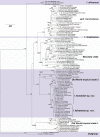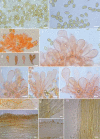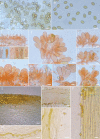Two new Inosperma (Inocybaceae) species with unexpected muscarine contents from tropical China
- PMID: 35035255
- PMCID: PMC8695569
- DOI: 10.3897/mycokeys.85.71957
Two new Inosperma (Inocybaceae) species with unexpected muscarine contents from tropical China
Abstract
An accurate identification of poisonous mushrooms and the confirmation of the toxins involved are both of great importance in the treatment of mushroom poisoning incidents. In recent years, cases of mushroom poisoning by Inosperma spp. have been repeatedly reported from tropical Asia. It is urgent to know the real species diversity of Inosperma in this region. In the present study, we proposed two new Inosperma species from tropical Asia, namely I.muscarium and I.hainanense. They were described based on morphology and multilocus phylogeny. Detailed descriptions, color photographs and the discussion with other closely related species of the two new taxa were provided. In addition, a comprehensive muscarine determination of these two new species using ultrahigh performance liquid chromatography tandem mass spectrometry (UPLC-MS/MS) approach has been performed. Results showed that these two species were muscarine positive, with a content of 16.03 ± 1.23 g/kg in I.muscarium and a content of 11.87 ± 3.02 g/kg in I.hainanense, much higher than the known species I.virosum. Recovery of muscarine ranged from 93.45% to 97.25%, and the average recovery is 95.56%.
Keywords: Agaricales; muscarine; new species; phylogeny; taxonomy.
Lun-Sha Deng, Rui Kang, Nian-Kai Zeng, Wen-Jie Yu, Cheng Chang, Fei Xu, Wang-Qiu Deng, Liang-Liang Qi, Yu-Ling Zhou, Yu-Guang Fan.
Figures








References
-
- Bandini D, Oertel B, Eberhardt U. (2021) Even more fibre-caps (2): Thirteen new species of the family Inocybaceae. Mycologia Bavarica 21: 27–98.
-
- Bau T, Fan YG. (2018) Three new species of Inocybesect.Rimosae from China. Mycosystema 37(6): 693–702. 10.13346/j.mycosystema.180033. - DOI
-
- Cervini M, Carbone M, Bizio E. (2021) Inospermavinaceum, una nuova specie distinta da I.rhodiolum e I.adaequatum. Rivista di Micologia 63(3): 215–241.
LinkOut - more resources
Full Text Sources
Miscellaneous
